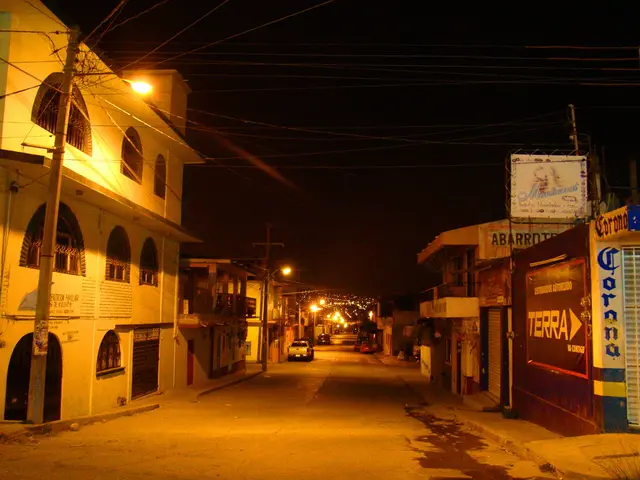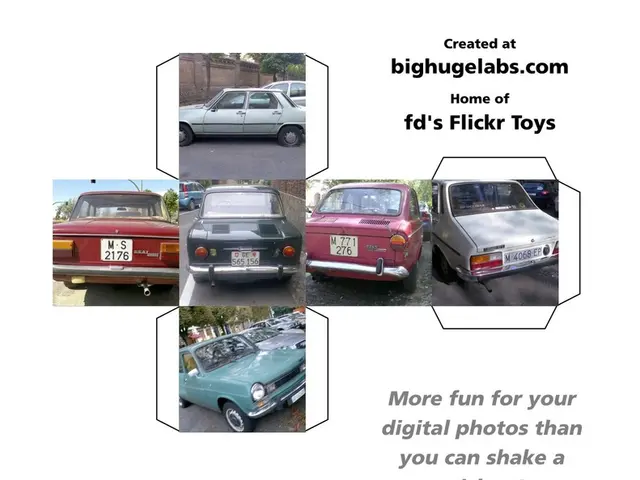Inquisition: Can an autonomous, electric bus spearhead Riverside's transformation into the next Detroit?
A Trip into the Future of Transportation: Riverside's Fully Self-Driving Ohmio Bus
Riverside, California is introducing a futuristic mode of transportation with its self-driving Ohmio buses. The electric shuttles have hit the streets, marking a significant stride for the city as the first in the nation to deploy such innovation in a city transit system.
These buses might be small, maxing out at 25mph and traversing a pre-designated route, but they redefine the driving experience. Keeping up with the city's aspiring ambition of becoming the newest Motor City, these self-driving wonders are an essential piece of the puzzle, according to Mayor Lock Dawson.
The journey began in October 2023, when the Riverside City Council greenlit a two-year pilot program. The Riverside Transit Agency (RTA) agreed to operate, staff, and maintain three automated and electric Ohmio shuttle buses. By the end of the program's inaugural year, passengers could find these autonomous vehicles at the Riverside Municipal Airport, downtown Riverside, and UC Riverside.
While other instances of self-driving buses exist, they are usually limited to private roads, properties, or require human intervention. Riverside's Ohmio buses are different; they cruise autonomously with human oversight solely for emergency purposes or helping passengers.
Bus rider, Patrick Gray, 32, shared his observations: "Now, the robots are trying to replace us. I used to be accustomed to humans driving things, but with the rise of AI and robotic stuff, it feels like we're evolving into a new era of life."
This program is jointly funded by the Riverside Transit Agency, South Coast Air Quality Management District, Ohmio, and the city of Riverside. As part of the arrangement, Ohmio moved its headquarters from New Zealand to Riverside, further cements the city as the company's research, development, testing, and designated sales point.
Ohmio anticipates producing between 500 and 750 buses in its first five years, which would generate over $2 million in sales tax revenue for the city. Additionally, the company has committed to providing 25 local jobs over the first three years of the program.
The autonomous vehicles follow routes utilizing existing electric vehicle charging infrastructure and charge when not in service or overnight. Reaching speeds of 15mph initially, they collect valuable data along the way, which they share with the RTA for compliance with state and federal laws.
The buses are equipped with sensors to detect surrounding obstacles, and their stops are pre-programmed. Occasionally, they can skip scheduled stops, so long as a human operator is present.
The human operator's role largely involves passenger communication and emergency assistance, although impromptu help might be required, such as when the bus suddenly stopped to avoid a car in the opposite lane, surprising passenger Nataly Zuniga. Despite this, she felt safe and expressed interest in continuing to use these autonomous vehicles on busier roads.
While these autonomous buses initially cater to the outskirts of public transportation, they can potentially fill gaps created elsewhere, opening up new possibilities. Juan Matute, UCLA's deputy director of the Institute of Transportation Studies, endorses this view, stating, "This provides another option for when ridership is low or there's a need for smaller-street mobility."
Riverside's adaptive approach to clean energy doesn't stop with the Ohmio buses, as it also welcomed Voltu, a company manufacturing medium-duty all-electric trucks, and Hyundai Rotem, which manufactures hydrogen trains. As Riverside delves deeper into the realm of autonomous transportation, embrace the change and step aboard this exciting, self-driving future.
Further Reading- LA28's plan for a car-free Olympics now includes air taxis the price of a high-end Uber- California expands its electric school bus fleet as federal freeze paused efforts elsewhere- Amazon's robotaxi effort will begin testing in Los Angeles
- The self-driving Ohmio buses in Riverside, California represent a significant advancement in the transportation industry, particularly in the manufacturing of electric vehicles.
- The deployment of these autonomous buses marks a crucial step towards California's business ambition, striving to become a leading hub in the field of science and technology.
- The Riverside Transit Agency (RTA) plays a pivotal role in the operation, maintenance, and staffing of the Ohmio self-driving buses, which have become integral to the city's infrastructure.
- The Ohmio buses, equipped with sensors and capable of traversing pre-designated routes, are proof of California's commitment to addressing climate-change through eco-friendly transportation.
- The autonomous vehicles offer a unique lifestyle experience, revolutionizing the conventional driving experience and paving the way for a future of AI-driven transportation.
- The program funding comes from multiple sources, including the city of Riverside, South Coast Air Quality Management District, Ohmio, and the Riverside Transit Agency, highlighting the collaboration between environmental-science and finance sectors.
- The Ohmio buses are anticipated to generate significant revenue for the city through sales tax and local job creation, turning Riverside into a notable hub for the company's research and development efforts.
- The human operators assist with passenger communication and emergency situations, ensuring the safety and comfort of riders while easing the transition into their self-driving future.
- As Riverside continues to explore clean energy solutions, it expands its horizons to include companies like Voltu, manufacturing all-electric trucks, and Hyundai Rotem, which manufactures hydrogen trains, solidifying Riverside's role as a pioneer in the autonomous transportation industry.








